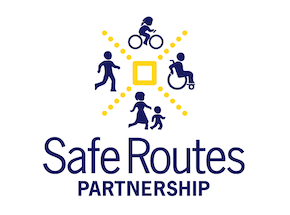Resource Library
This webinar provides a cost-benefit analysis on Safe Routes to School.
This short video provides a brief overview of the importance of joint-use agreements to increase access to physical activity opportunities in Los Angeles County.
This presentation provides an overview of Arkansas Dept. of Education joint use program. Moving from the joint use program, funding, priorities and legislation to support joint use agreements.
Sometimes pictures are more effective than words. This inforgraphic is designed to address the role of communities in increasing access to physical activity opportunities.
This webinar is a follow-up to the webinar Federal Funding for Transportation 101. This provides a 201-level overview on transportation finance to support Safe Routes to School programs.
This study investigates the effect of a school-based intervention called Travelling Green (TG) on children's walking to and from school and total daily physical activity.
This memorandum of understanding is between Compton Unified School District and the L.A. County Department of Public Works.
Improving people’s access to recreation areas such schools and parks through joint use agreements can also increase opportunities for physical activity.
The Kentucky Cancer Consortium contracted with Kentucky Youth Advocates to obtain baseline data about shared use of school facilities with community agencies during non-school hours in Kentucky.
This webinar provides a 101-level introduction to federal funding.
This webinar by PreventObesity.net introduces the concepts of shared use and offers a pratical gude to implementing shared use agreements.
KEY TAKEAWAYS:
Only ¼ of US youth ages 12-15 met national physical activity guidelines in 2012, and levels of physical activity differ by gender and weight status.
Regular physical activity promotes important health benefits and reduces risk for obesity.
The purpose of this study is to describe the prospective relationship between physical activity and academic performance.
How can you make it easier for your community to access local school facilities like gyms, fields, basketball courts, and playgrounds?
Limited evidence exists on the metabolic and cardiovascular risk correlates of commuting by vehicle, a habitual form of sedentary behavior.
The authors are researchers at the University of North Carolina Highway Safety Research Center, Chapel Hil, North Carolina. They provide a review of the health benefits of active transportation as a call to transportation planners to include health in the agenda for transportation planning, funding, and engineering considerations.
To successfully stimulate cycling, it is necessary to understand the factors that facilitate or inhibit cycling. Little is known about how changes in the neighborhood environment are related to changes in cycling behavior. This study aimed to identify environmental determinants of the uptake of cycling after relocation.
This article reports on a study that explored the barriers that prevent parents from allowing their children to commute to school. The authors used data from parents of school children in Illinois, U.S., as reported in the National Safe Routes to School Parent Surveys.
This commentary represents a consensus of next actions towards creating built environments that support healthy active living. The policy environment and Canadian evidence are reviewed. Issues and challenges to policy change are discussed.

